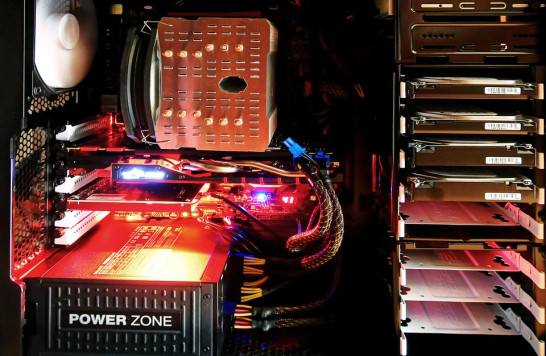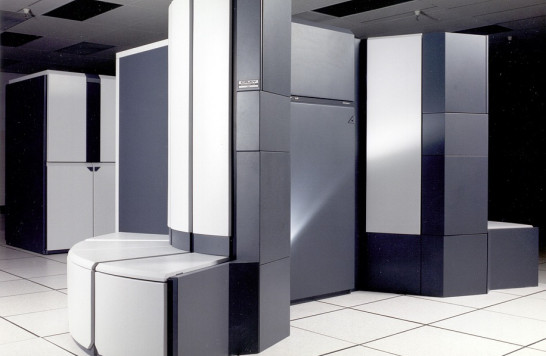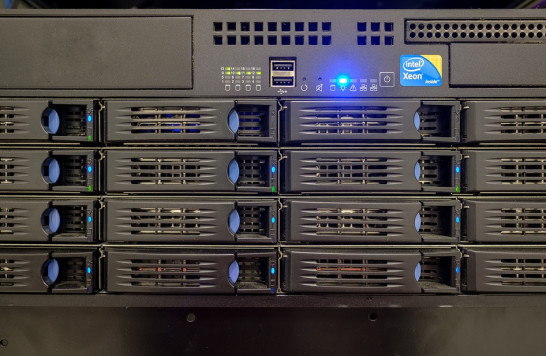Resources
-
Microsoft has patented a hermetically sealed data center full of high-pressure gas
The problem of cooling data centers is acute. In an attempt to find the most efficient way to cope with heat transfer companies design new technologies, including leak-proof liquid cooling and liquid immersion baths. However, in some circumstances, these solutions may be quite expensive.
-
Four ways to stem the tide of rising cybersecurity risks
One of the greatest challenges in the IT industry is staying ahead of the cybercriminal. This is no easy task. The 2019 Cost of a Data Breach Report, conducted by the Ponemon Institute and sponsored by IBM Security, indicates that the chances of experiencing a data breach have increased from 22.6 percent in 2014 to 29.6 percent in 2019. In other words, organizations are now one-third more likely to experience a breach in the next two years. The increased success that cybercriminals are achieving underscores the importance for IT organizations of ensuring they’re providing the proper measures for reducing cybersecurity risk.
-
Five things I learned about hybrid cloud from IBM clients
Face-to-face conversations with clients provide a great opportunity to hear first-hand what challenges business leaders are facing around hybrid cloud for enterprise workloads. Whether these conversations take place at a conference or onsite during a client project, they’ve shown me what’s right and what’s wrong with cloud from the perspective of the IT administrators whose job it is to keep manufacturing floors, distribution centers, branch offices, pharmacies and a host of other businesses running. What follows are some of the key takeaways I’ve gleaned from recent discussions with clients on enterprise hybrid cloud:
-
Microsoft reveals its new Azure HPC offerings at SC19
At SC19 in Denver, Microsoft demonstrated its new HPC Azure hardware based on NVIDIA and Graphcore accelerators. The new Microsoft Azure Virtual Machines are part of the Open Compute Project (OCP), a leading-edge open hardware development model that promotes possibilities for global data center deployment in the cloud. The platform is called Open CloudServer (previously, Project Olympus). All design specifications are open-source and standardized, which allows IT and data center operators to adjust community-developed innovation and scale proven hardware designs for their organizations’ specific purposes.
-
IBM’s Power9 systems are leading the supercomputers’ race
The 54th TOP500 list of the world’s fastest supercomputers was published on November 18th, 2019 in Denver, CO. The aggregate performance of 500 systems, based on the High-Performance Linpack (HPL) benchmark, continues to grow and currently stands at 1.65 exaflops. The threshold for entering the list has increased to 1.14 petaflops compared to 1.02 petaflops in the previous list in June 2019. Interestingly, the top of the list remains largely unchanged. In particular, the top ten remains the same as in the previous list.
-
Microsoft Azure introduces Graphcore’s IPUs
Graphcore, the AI chip startup, has announced that it’s expanding collaboration with Microsoft to implement its intelligent processing units (IPUs) on Microsoft Azure cloud. This innovation will make Microsoft the first public cloud service provider that offers IPU for machine learning workloads. According to the partners’ reports, the testing of a sample server, equipped with eight Graphcore C2 IPU-processor PCIe cards, showed impressive results.
-
Gartner forecasts public cloud computing to be a $300 billion business by 2021
Gartner, the world’s leading research and advisory company, forecasts that the global public cloud services market will continue to grow exponentially in the coming years, as enterprises increasingly transition to the cloud to achieve their desired digital business outcomes. “Building, implementing and maturing cloud strategies will continue to be a top priority for years to come,” says Sid Nag, research vice president at Gartner. This is no wonder at all - cloud services are capable of providing the speed and agility required for modern digital business processes. Moreover, moving a business to the cloud can lead to cost savings and even generate new sources of revenue.
-
Fully autonomous data centers will have to wait?
Three years ago, Microsoft announced that it had successfully completed testing a fully autonomous data center module that operated underwater for three months. Phase 2 of Project Natick was launched in 2018 when Microsoft sank a 40 feet-long dock with 12 racks housing 864 datacenter servers in the North Sea off the Orkney Islands (Scotland). A little over a year has passed since then, and although it’s about now that Microsoft promised to report results, all it’s saying in this regard is that the test is still rolling.
-
IBM promotes an Open Memory Interface standard for server processors
IBM calls for a total rethinking of structuring memory subsystems in high-performance processors with its new serial Open Memory Interface (OMI) standard. The idea itself is not completely new though - there have already been attempts to introduce a serial memory standard instead of a traditional parallel one. Take, for instance, the FB-DIMM standard that didn’t last long due to the high energy consumption and heat dissipation of the buffer chip on each memory module. A similar scheme is currently utilized by the IBM’s POWER8 and POWER9 SU processors.
-
Dell builds the largest industrial supercomputer for Eni
Eni, an Italian multinational oil and gas company, has announced its intention to update its existing supercomputer system, HPC4, to a new HPC5 machine. HPC4 was first introduced at the opening of Eni’s Green Data Center in January 2018, proudly carrying the title of the world’s most powerful industrial supercomputer.
Questions?
Are you ready to make the most of IT? Schedule a call with an expert today.
Call 877-591-4015 or REQUEST A FREE CONSULTATION









